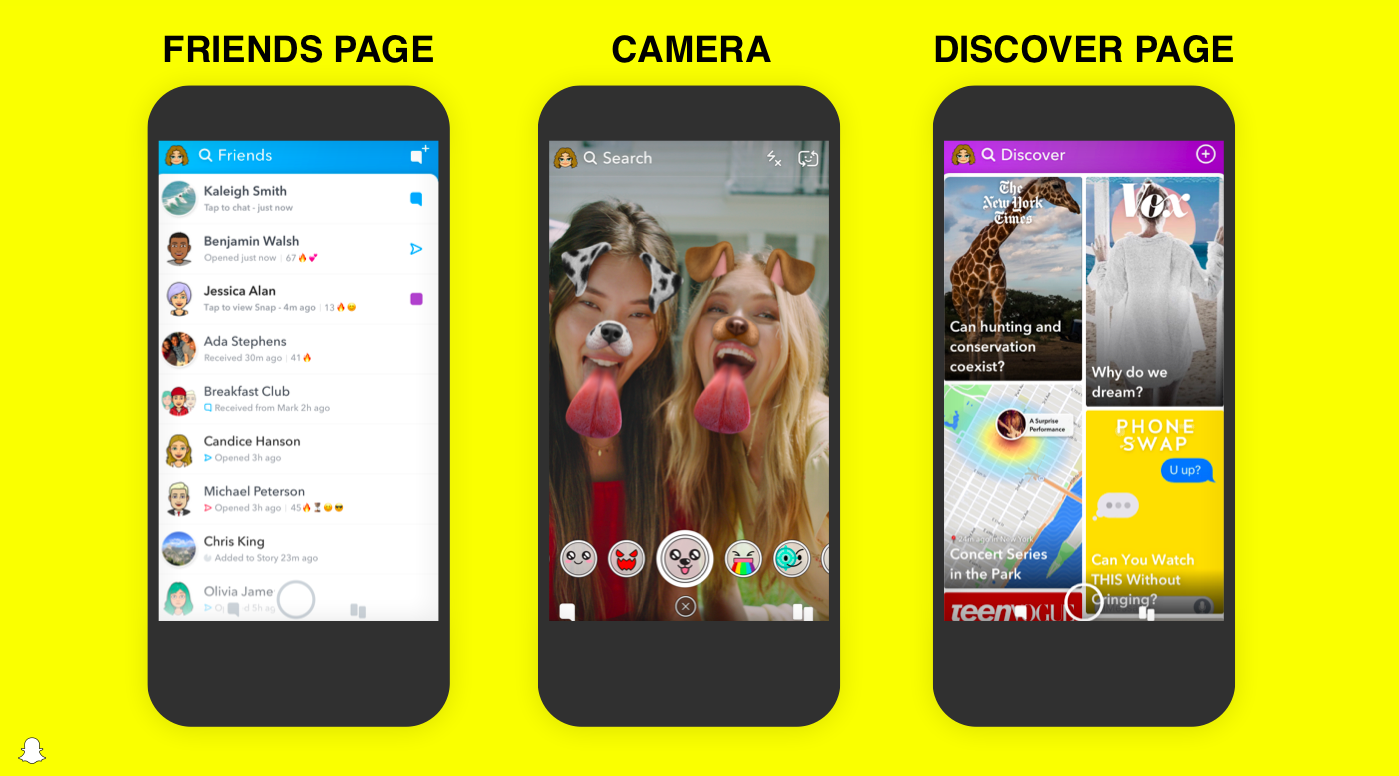Last week, Snapchat unveiled a major redesign of their app that received quite a bit of negative feedback. As a video-sharing platform that has integrated itself into users’ daily lives, Snapchat relies on simplicity and ease of use. So when large numbers of these users begin to express pretty serious frustration about the app’s new design, it’s a big threat to their business.

You can bet that right now Snapchat are analyzing exactly how big a threat this backlash is by monitoring the conversation online. This is a perfect example of businesses leveraging the Voice of their Customer with tools like Natural Language Processing. Businesses that track their product's reputation online can quantify how serious events like this are and make informed decisions on their next steps. In this blog, we’ll give a couple of examples of how you can dive into online chatter and extract important insights on customer opinion.
The new Snapchat update might make me stop using Snapchat that's how bad it is
— Sash (@sashalane27) January 11, 2018
This TechCrunch article pointed out that 83% of Google Play Store reviews in the immediate aftermath of the update gave the app one or two stars. But as we mentioned in a blog last week, star rating systems aren’t enough - they don’t tell you why people feel the way they do and most of the time people base their star rating on a lot more than how they felt about a product or service. To get accurate and in-depth insights, you need to understand exactly what a reviewer is positive or negative about, and to what degree they feel this way. This can only be done effectively with text mining. So in this short blog, we’re going to use text mining to:
- Analyze a sample of the Play Store reviews to see what Snapchat users mentioned in reviews posted since the update.
- Gather and analyze a sample of 1,000 tweets mentioning “Snapchat update” to see if the reaction was similar on social media.
In each of these analyses, we’ll use the use the AYLIEN Text Analysis API, which allows you 1,000 hits per day for free to test it out. This is ideal for testing it out on small datasets like the ones we’ll use in this post.
What did the app reviewers talk about?
As TechCrunch pointed out, 83% of reviews since the update shipped received one or two stars, which gives us a high-level overview of the sentiment shown towards the redesign. But to dig deeper, we need to look into the reviews and see what people were actually talking about in all of these reviews. As a sample, we gathered the 40 reviews readily available on the Google Play Store and saved them in a spreadsheet. We can analyze what people were talking about in them by using our Text Analysis API’s Entities feature. This feature analyzes a piece of text and extracts the people, places, organizations and things mentioned in it. One of the types of entities returned to us is a list of keywords. To get a quick look into what the reviewers were talking about in a positive and negative light, we visualized the keywords extracted along with the average sentiment of the reviews they appeared in. From the 40 reviews, our Text Analysis API extracted 498 unique keywords. Below you can see a visualization of the keywords extracted and the average sentiment of the reviews they appeared in from most positive (1) to most negative (-1). First of all, you’ll notice that keywords like "love" and "great" are high on the chart, while "frustrating" and "terrible" are low on the scale - which is what you’d expect. But if you look at keywords that refer to Snapchat, you’ll see that "Bitmoji" appears high on the chart, while “stories,” “layout,” and “unintuitive” all appear low down the chart, giving an insight into what Snapchat’s users were angry about.
How did Twitter react to the Snapchat update?
Twitter is such an accurate gauge of what the general public is talking about that the US Geological Survey uses it to monitor for earthquakes - because the speed at which people react to earthquakes on Twitter outpaces even their own seismic data feeds! So if people Tweet about earthquakes during the actual earthquakes, they are absolutely going to Tweet their opinions of Snapchat updates. To get a snapshot of the Twitter conversation, we gathered 1,000 Tweets that mentioned the update.To gather the Tweets, we ran a search on Twitter using the Twitter Search API (this is really easy - take a look at our beginners’ guide to doing this in Python). After we gathered our Tweets, we analyzed them with our Sentiment Analysis feature and as you can see, the Tweets were overwhelmingly negative:
Quantifying the positive, negative, and neutral sentiment shown towards the update on Twitter is useful, but using Text Mining we can go one further and extract the keywords mentioned in every one of these Tweets. To do this, we use the Text Analysis API’s Entities feature. Disclaimer: this being Twitter, there was quite a bit of opinion expressed in a NSFW manner 😉
The number of expletives we identified as keywords reinforces the severity of the opinion expressed towards the update. You can see that “stories” and “story” are two of the few prominently-featured keywords that referred to feature updates while keywords like “awful” and “stupid” are good examples of the most-mentioned keywords in reaction to the update as a whole. It’s clear that using text mining processes like sentiment analysis and entity extraction - can provide a detailed overview of public reaction to an event by extracting granular information from product reviews and social media chatter. If you can think of insights you could extract with text mining about topics that matter to you, our Text Analysis API allows you to analyze 1,000 documents per day free of charge to let you see how easy it is to get set up - click on the image below to sign up. 
Related Content
-
 General
General16 Feb, 2024
Why AI-powered news data is a crucial component for GRC platforms

Ross Hamer
4 Min Read
-
 General
General24 Oct, 2023
Introducing Quantexa News Intelligence

Ross Hamer
5 Min Read
-
 Product
Product15 Mar, 2023
Introducing an even better Quantexa News Intelligence app experience

Ross Hamer
4 Min Read
Stay Informed
From time to time, we would like to contact you about our products and services via email.
